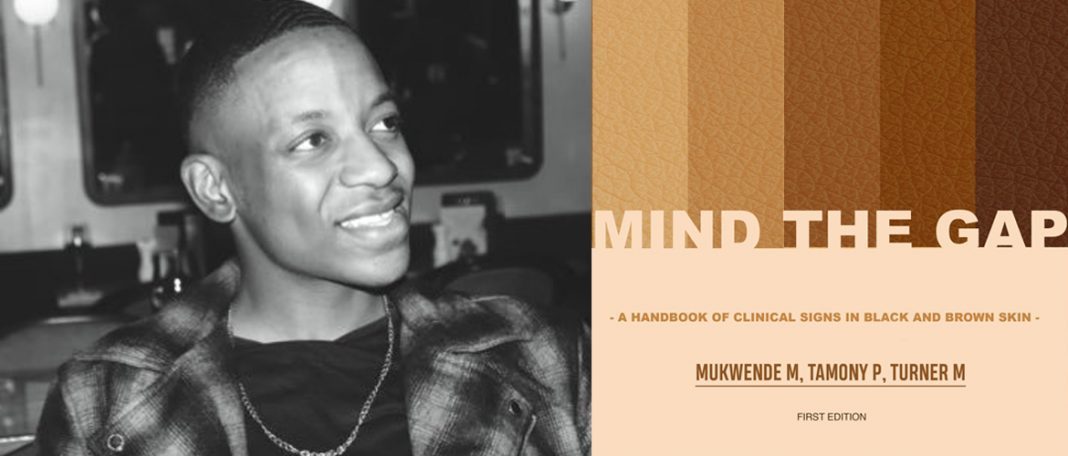Recognizing problems on dark and Asian skin tones has never been easy all these years because of a lack of proper education on darker skin tones. Here is a second year medical student named Malone Mukwende who has written a book to easily identify diseases on dark skin. He is studying at St.George’s, University of London.
He said that rashes and spots are a way to identify a skin disease but that would not appear on dark skin and in medical schools these conditions are taught to be identifiable on white skin. Majority of the pictures about common diseases like eczema and psoriasis were illustrated in medical schools only on fair skin. But how can it be diagnosed on a dark skin? To educate people to identify problems on Asian skin tones and to diagnose disease on dark skin, he has come up with a book called “Mind the Gap”. It is basically a handbook created by a medical student that contains clinical signs in black and brown skin tones.
The book comprises side by side illustrations of skin diseases and how they look on dark and pale skin tones. This way, one can find the difference between diseases on different skin tones and can easily diagnose disease on dark skin tones.
Even at a very young age Malone Mukwende was interested in science. When he was in college, he felt that most of his study material and case studies were about diagnosing diseases on white skin tones. He approached his professor about this issue, hence Mukwende along with his two other professors developed the handbook.
St. George’s helped Malone connect with the team of lecturers who have helped him to publish the book. One of the University spoke’s person said “It was agreed that this was a very important issue and an essential part of decolonizing the curriculum.”
Students were filing petitions to include ethnically diverse examples of case presentations in all medical schools. In some clinical representations, the occurrence or symptoms of diseases might vary in White and Black Minority Ethnic(BAME) patients. Medical representations must consider all types of possibilities, if the indications are only on white skin, students might not acknowledge the symptoms of the diseases on black or brown skin tones. This white normativity in medical schools might make students unprepared to handle the disease on other skin tones.
After this petition reached up to 190,000 signatures, the book Mind the Gap was released. The condition and Symptoms Kawasaki disease was used in one of the illustrations. This picture explains two pictures side by side. Left picture contains the illustration that represents the disease on dark skin and the right picture contains the illustration that represents the disease on white skin. According to the representation, white skin had several red spots whereas, on the dark skin, it was hard to find any. These kinds of studies might lead to late diagnosis of diseases.
His work is welcomed worldwide and the handbook is now read in 102 countries. Mukwende also launched a website to add additional information to diagnose disease on dark skin and to grow the content of his handbook, Mind the Gap.


















